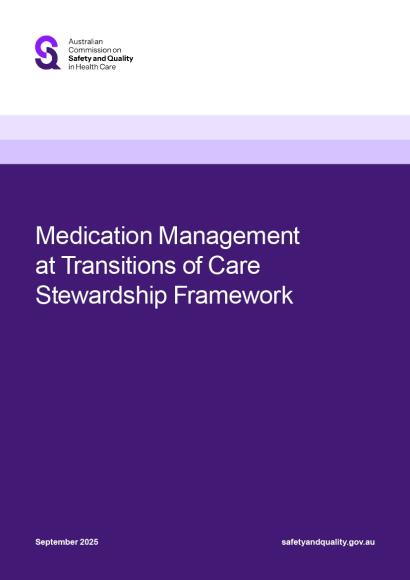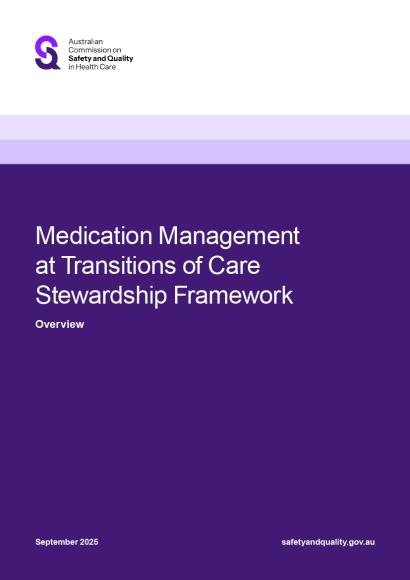Medication Management at Transitions of Care Stewardship Framework
The Commission has developed the Medication Management at Transitions of Care Stewardship Framework as part of its commitment to reducing risks of harm associated with transitions of care.
Overview
The Medication Management at Transitions of Care Stewardship Framework (the Framework) describes a stewardship approach to support safe and high-quality medication management at transitions of care. It is designed to be incorporated into existing organisational systems, processes and clinical practice.
The Framework includes four elements:
- Governing committee
- Multidisciplinary stewardship team
- Medication management activities
- Monitoring, evaluation and reporting
Why is the Framework important?
Medication management at transitions of care is a period of high risk for medication errors and miscommunication, which can lead to harm. More than 50% of medication errors occur at transition of care.
To reduce the risk at transitions of care, the Framework aims to:
- establish a stewardship approach to medication management
- support coordinated governance of medication management
- promote and optimise safe and high-quality medication management
- reduce medication-related harm and hospital readmission rates due to errors and miscommunication
- improve communication between hospitals and primary and aged care, to enable timely discharge planning and post-discharge medication management follow-up
- ensure continuous improvement.
Where does this Framework apply?
This Framework focuses on transitions of care that occur between hospital inpatient settings and primary and aged care settings, a period known to be especially high risk. That is, transitions of care that occur as part of a person’s hospital journey from admission, throughout the hospital stay, to discharge into primary or aged care settings, for effective follow-up care. The principles and elements of the Framework may be transferrable, with appropriate modification, to other transitions of care settings and to other patient cohorts.


